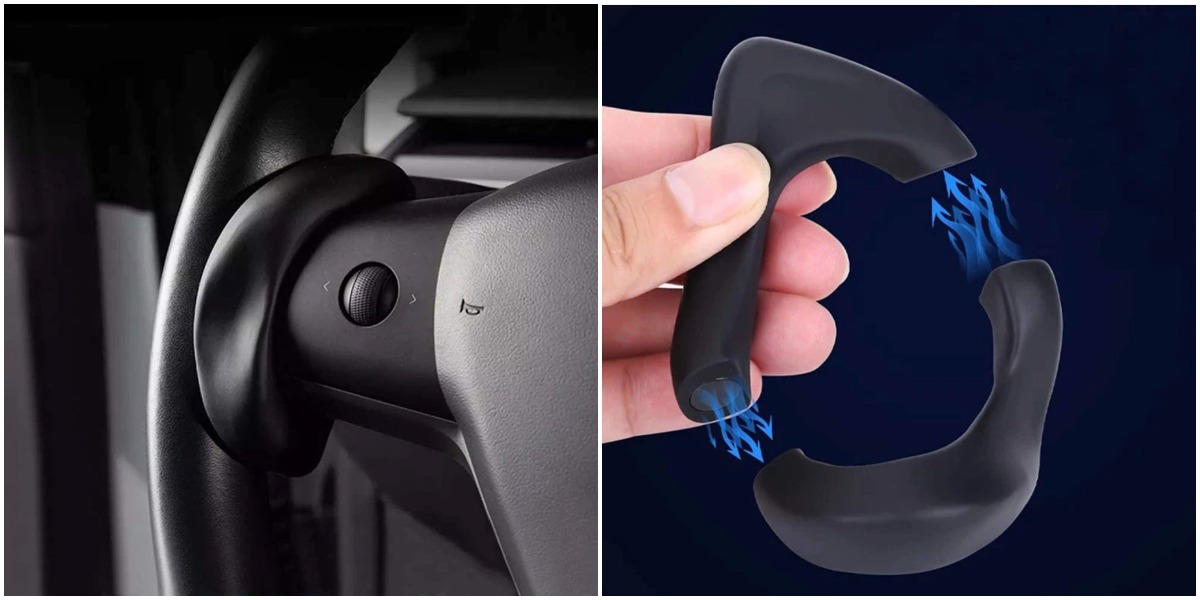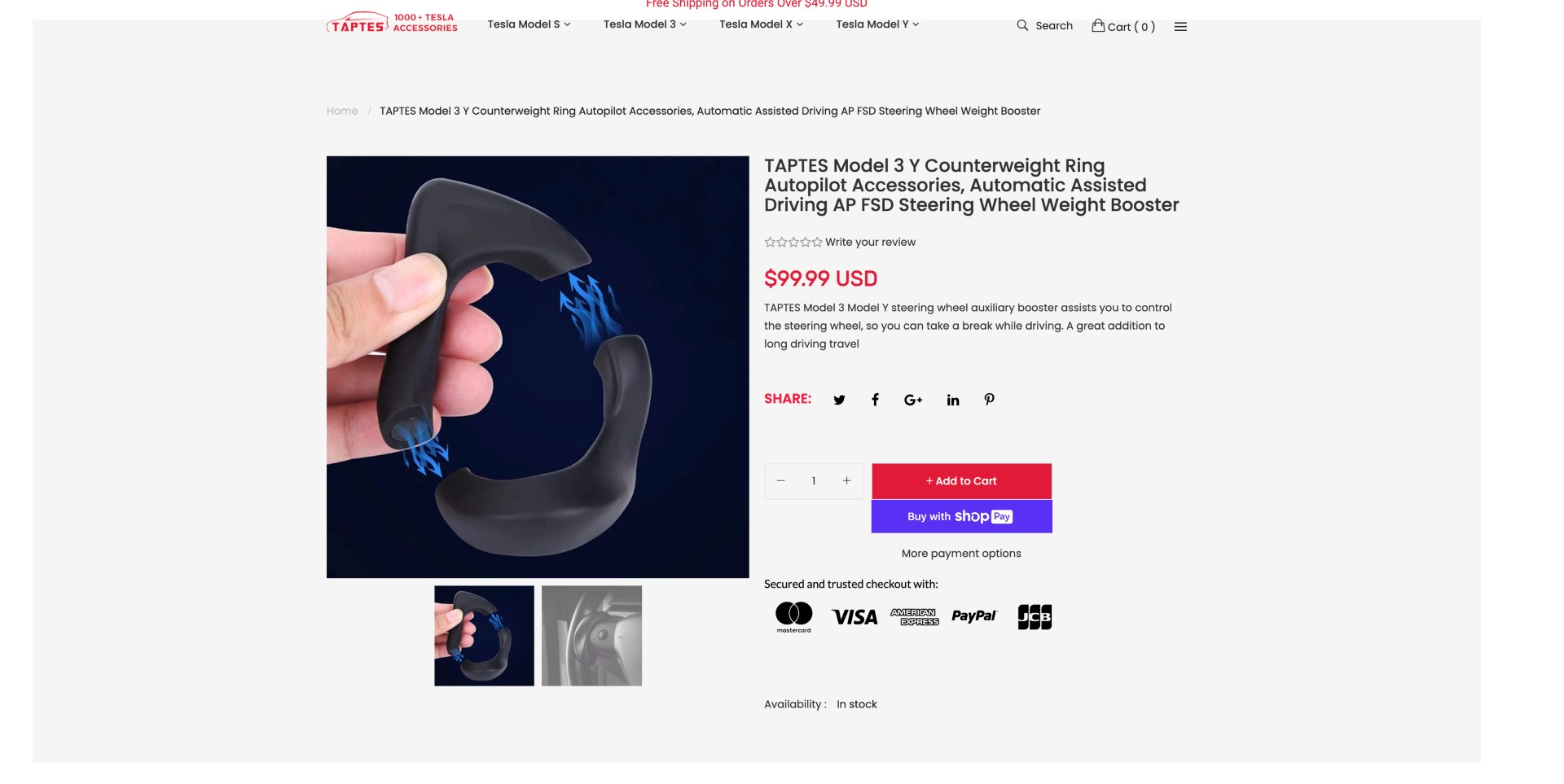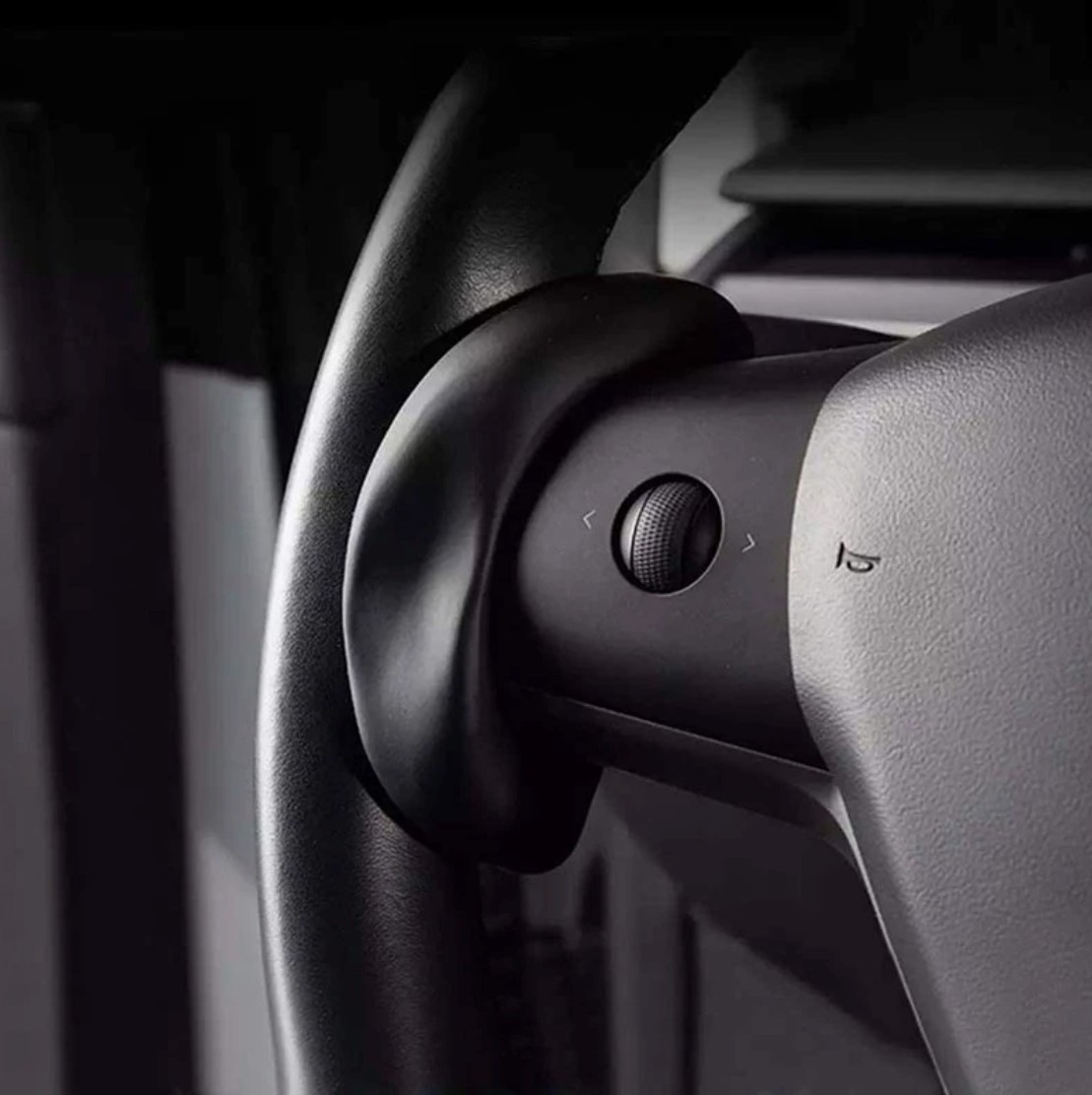

News
Third-party Tesla accessory store begins sale of Autopilot steering wheel cheat device
UPDATE: The manufacturer of the device, TapTes, removed the device from its online store and said it will destroy all units of the Autopilot counterweight.
A third-party manufacturer of Tesla accessories is taking advantage of the recent Consumer Reports’ trick test by offering a detachable weight to emulate a human hand on a Tesla steering wheel. The device could trick the vehicle into allowing Autopilot or Full Self-Driving to operate without a driver paying attention to the road.
The description of the product aims to take advantage of Tesla’s driver monitoring features, which include having a hand on the steering wheel at all times to show that the driver is ready to take over in case of an emergency. The exploitative product is similar to the same device that Consumer Reports used to trick Tesla Autopilot in a recent test that aimed to show the company’s cars could be tricked into operating without anyone behind the wheel. The test has drawn criticism from many within the Tesla community who understand the capabilities of Autopilot and the FSD Suite.
Tesla’s Q1 2021 accident data shows Autopilot is closing in on being 10X safer than humans
The “Model 3 Y Counterweight Ring Autopilot Accessories, Automatic Assisted Driving AP FSD Steering Wheel Weight Booster” is described by the company on its website:
“TAPTES Model 3 Model Y steering wheel auxiliary booster assists you to control the steering wheel, so you can take a break while driving. A great addition to long driving travel.”
Credit: TAPTES
The device could contribute to more misinformation regarding Tesla’s semi-autonomous driving functionalities being reported in the news. Tesla does not and has never claimed that its vehicles can drive themselves. The company requires drivers to remain attentive during the vehicle’s operation, requiring owners to pay full attention to the road and the car’s surroundings.
As previously mentioned, the invention of this cheat device from Taptes is in relation to the Consumer Reports test that we previously reported on. Consumer Reports was able to trick the Tesla into driving without anyone in the seat by using a makeshift weight that hangs from the steering wheel. The publication claimed that this was proof that a Tesla will drive with no one in the driver’s seat, but, in reality, you’d need special equipment to get the car to drive itself.
Credit: Taptes
TAPTES is in no way affiliated with Tesla. The company states on its website:
“TAPTES® official Tesla accessories shop, not affiliated with or endorsed by Tesla Motors. It is neither inferred nor implied that products sold by TAPTES are authorized by or in any way connected to Tesla Motors. All manufacturer names, symbols, and descriptions used in our images and text are used solely for identification purposes only. Tesla Model S, Model X, Model 3 and Model Y are trademarks of Tesla Motors.”

News
Tesla starts showing how FSD will change lives in Europe
Local officials tested the system on narrow country roads and were impressed by FSD’s smooth, human-like driving, with some calling the service a game-changer for everyday life in areas that are far from urban centers.

Tesla has launched Europe’s first public shuttle service using Full Self-Driving (Supervised) in the rural Eifelkreis Bitburg-Prüm region of Germany, demonstrating how the technology can restore independence and mobility for people who struggle with limited transport options.
Local officials tested the system on narrow country roads and were impressed by FSD’s smooth, human-like driving, with some calling the service a game-changer for everyday life in areas that are far from urban centers.
Officials see real impact on rural residents
Arzfeld Mayor Johannes Kuhl and District Administrator Andreas Kruppert personally tested the Tesla shuttle service. This allowed them to see just how well FSD navigated winding lanes and rural roads confidently. Kruppert said, “Autonomous driving sounds like science fiction to many, but we simply see here that it works totally well in rural regions too.” Kuhl, for his part, also noted that FSD “feels like a very experienced driver.”
The pilot complements the area’s “Citizen Bus” program, which provides on-demand rides for elderly residents who can no longer drive themselves. Tesla Europe shared a video of a demonstration of the service, highlighting how FSD gives people their freedom back, even in places where public transport is not as prevalent.
What the Ministry for Economic Affairs and Transport says
Rhineland-Palatinate’s Minister Daniela Schmitt supported the project, praising the collaboration that made this “first of its kind in Europe” possible. As per the ministry, the rural rollout for the service shows FSD’s potential beyond major cities, and it delivers tangible benefits like grocery runs, doctor visits, and social connections for isolated residents.
“Reliable and flexible mobility is especially vital in rural areas. With the launch of a shuttle service using self-driving vehicles (FSD supervised) by Tesla in the Eifelkreis Bitburg-Prüm, an innovative pilot project is now getting underway that complements local community bus services. It is the first project of its kind in Europe.
“The result is a real gain for rural mobility: greater accessibility, more flexibility and tangible benefits for everyday life. A strong signal for innovation, cooperation and future-oriented mobility beyond urban centers,” the ministry wrote in a LinkedIn post.
News
Tesla China quietly posts Robotaxi-related job listing
Tesla China is currently seeking a Low Voltage Electrical Engineer to work on circuit board design for the company’s autonomous vehicles.

Tesla has posted a new job listing in Shanghai explicitly tied to its Robotaxi program, fueling speculation that the company is preparing to launch its dedicated autonomous ride-hailing service in China.
As noted in the listing, Tesla China is currently seeking a Low Voltage Electrical Engineer to work on circuit board design for the company’s autonomous vehicles.
Robotaxi-specific role
The listing, which was shared on social media platform X by industry watcher @tslaming, suggested that Tesla China is looking to fill the role urgently. The job listing itself specifically mentions that the person hired for the role will be working on the Low Voltage Hardware team, which would design the circuit boards that would serve as the nervous system of the Robotaxi.
Key tasks for the role, as indicated in the job listing, include collaboration with PCB layout, firmware, mechanical, program management, and validation teams, among other responsibilities. The role is based in Shanghai.
China Robotaxi launch
China represents a massive potential market for robotaxis, with its dense urban centers and supportive policies in select cities. Tesla has limited permission to roll out FSD in the country, though despite this, its vehicles have been hailed as among the best in the market when it comes to autonomous features. So far, at least, it appears that China supports Tesla’s FSD and Robotaxi rollout.
This was hinted at in November, when Tesla brought the Cybercab to the 8th China International Import Expo (CIIE) in Shanghai, marking the first time that the autonomous two-seater was brought to the Asia-Pacific region. The vehicle, despite not having a release date in China, received a significant amount of interest among the event’s attendees.
Elon Musk
Elon Musk and Tesla AI Director share insights after empty driver seat Robotaxi rides
The executives’ unoccupied tests hint at the rapid progress of Tesla’s unsupervised Robotaxi efforts.

Tesla CEO Elon Musk and AI Director Ashok Elluswamy celebrated Christmas Eve by sharing personal experiences with Robotaxi vehicles that had no safety monitor or occupant in the driver’s seat. Musk described the system’s “perfect driving” around Austin, while Elluswamy posted video from the back seat, calling it “an amazing experience.”
The executives’ unoccupied tests hint at the rapid progress of Tesla’s unsupervised Robotaxi efforts.
Elon and Ashok’s firsthand Robotaxi insights
Prior to Musk and the Tesla AI Director’s posts, sightings of unmanned Teslas navigating public roads were widely shared on social media. One such vehicle was spotted in Austin, Texas, which Elon Musk acknowleged by stating that “Testing is underway with no occupants in the car.”
Based on his Christmas Eve post, Musk seemed to have tested an unmanned Tesla himself. “A Tesla with no safety monitor in the car and me sitting in the passenger seat took me all around Austin on Sunday with perfect driving,” Musk wrote in his post.
Elluswamy responded with a 2-minute video showing himself in the rear of an unmanned Tesla. The video featured the vehicle’s empty front seats, as well as its smooth handling through real-world traffic. He captioned his video with the words, “It’s an amazing experience!”
Towards Unsupervised operations
During an xAI Hackathon earlier this month, Elon Musk mentioned that Tesla owed be removing Safety Monitors from its Robotaxis in Austin in just three weeks. “Unsupervised is pretty much solved at this point. So there will be Tesla Robotaxis operating in Austin with no one in them. Not even anyone in the passenger seat in about three weeks,” he said. Musk echoed similar estimates at the 2025 Annual Shareholder Meeting and the Q3 2025 earnings call.
Considering the insights that were posted Musk and Elluswamy, it does appear that Tesla is working hard towards operating its Robotaxis with no safety monitors. This is quite impressive considering that the service was launched just earlier this year.








